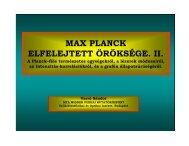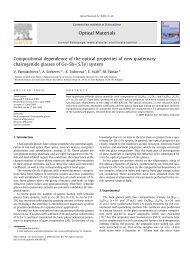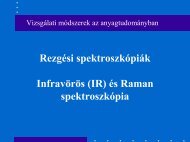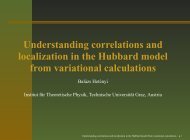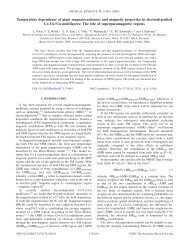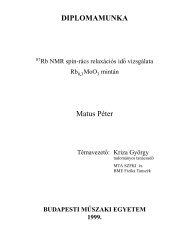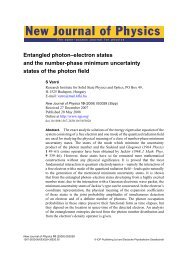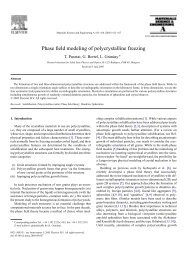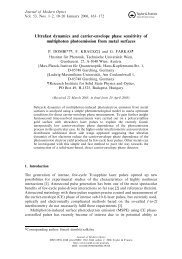ANNUAL REPORT - MTA SzFKI
ANNUAL REPORT - MTA SzFKI
ANNUAL REPORT - MTA SzFKI
Create successful ePaper yourself
Turn your PDF publications into a flip-book with our unique Google optimized e-Paper software.
I. METALLURGY AND MAGNETISM<br />
L.K. Varga, I. Balogh, É. Fazakas # , P. Kamasa, G. Konczos, Gy. Kovács + , J. Pádár, L.<br />
Pogány, F.I. Tóth<br />
Metallurgy. — The bulk glass forming ability (GFA) of Cu-based alloys have been<br />
studied in collaboration with the Materials Science Department of Miskolc University,<br />
Hungary. Several compositions have been prepared, following the bulk GFA criteria<br />
published so far in the literature, such as Cu 100-x-y-z Zr x Ti y Ag z , Cu 100-x Mm x Al y where Mm<br />
means Mischmetal.<br />
Surveying all the Cu-based amorphous alloys published in the literature so far, it turned<br />
out that the atomic mismatch condition of Egami and Waseda is fulfilled for all the Cubased<br />
bulk amorphous alloys, the λ value being above 0,3. Combining the chemical<br />
coordinates of Miedema (y) with the atomic mismatch (x), the glass forming and non-glass<br />
forming regions were found separated by the following curve: y=|10|∆Φ * |-39 |∆(1/n ws 1/3 |-1|<br />
and x=|1-R x /R Cu | for the binary Cu-based alloys.<br />
The glass forming ability of Al-based alloys (mainly of Al 85 Mm 5 Ni 8 Co 2 type<br />
compositions) has been investigated during the compaction of powders obtained by gas<br />
atomising and chopping the rapidly quenched ribbons.<br />
Soft magnetic nanocrystalline alloys. — Based on a Quasi-DC hysterograph, an<br />
experimental technique has been developed to obtain the true “static” hysteresis curve.<br />
This is the so-called “ballistic “method to obtain the hysteresis loop by integrating the<br />
measured incremental permeability (µ incremental = µ diff ) versus biasing DC field, H DC . In<br />
addition, it was demonstrated that it is possible to decompose the quasi-static hysteresis<br />
loop into two contributions deriving from domain magnetization rotation (DR) and domain<br />
wall movement (DWM) (Fig. 1 and Fig. 2) and this decompositon was modelled<br />
theoretically by the hyperbolic T model. The hyperbolic T model was further improved by<br />
splitting it in 3 overlapping hysteretic contributions: one DR and two DWM (jumping and<br />
annihilation) parts. Softwares have been developed to carry out measurements of<br />
reversible magnetization at very small excitation (H ~



